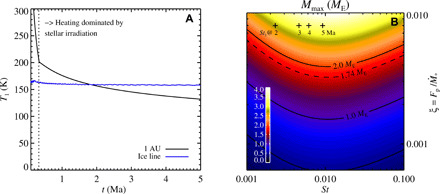Fig. 3. Thermal structure of the inner regions of the protoplanetary disc model.

(A) The temperature at 1-AU distance from the star as a function of time and the temperature of the water ice line. The temperature becomes dominated by stellar irradiation already after 0.3 Ma of disc evolution; the temperature then continues to drop more slowly as the stellar luminosity falls with time. The temperature falls below water vapor saturation after approximately 2 Ma of disc evolution. (B) The maximum planetary mass for growth tracks starting at r0 = 1.6 AU. The mass is shown as a function of the pebble Stokes number, St, and the ratio of the radial pebble flux rate through the protoplanetary disc relative to the gas flux rate, . We give the temperature a passive irradiation profile with fixed value of 140 K at 1 AU. The Stokes number at 1 AU for millimeter-sized pebbles is indicated at four different times. The maximum mass that leads to a good match for Venus’ orbit and mass is indicated with a dashed line. This is obtained for a range of Stokes numbers between 0.001 and 0.1, consistent with the evolution of the Stokes number of millimeter-sized pebbles from the early, dense protoplanetary disc to the late, dilute disc (pluses). The pebble-to-gas flux ratio lies in the range between 0.004 and 0.008; these values are similar to the solar ratio of refractory material relative to hydrogen/helium gas.
